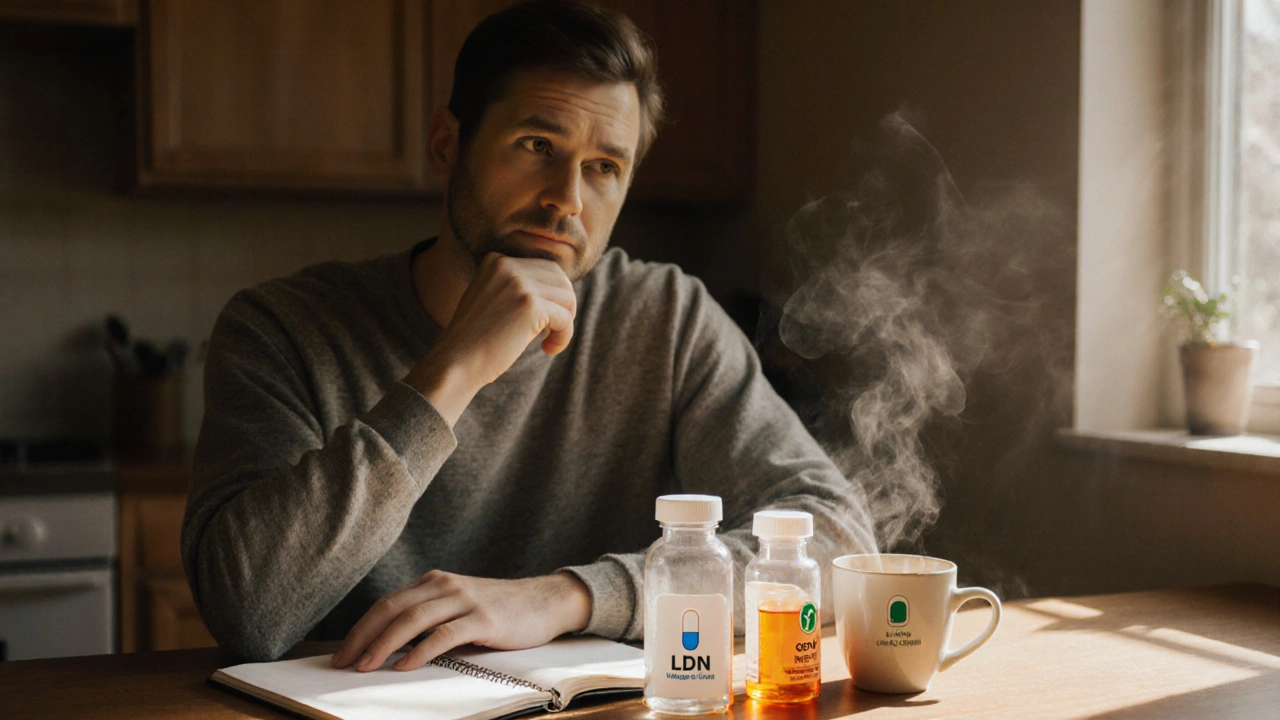If you’ve seen the term "Low Dose Naltrexone" floating around health forums, you’re not alone. People use LDN for everything from chronic pain to autoimmune issues, and the buzz can feel overwhelming. This guide cuts the clutter and gives you the facts you need to decide if LDN might help you.
Regular naltrexone blocks opioid receptors at high doses to treat addiction. In low doses (usually 1.5‑4.5 mg), it does the opposite – it temporarily blocks the receptors, then the body over‑reacts by making more endorphins when the block lifts. Those extra endorphins can calm inflammation, ease pain, and give a mild immune reset. The effect isn’t instant; most people notice change after a few weeks of daily use.
Doctors start most patients at 1.5 mg taken at bedtime. The night dose helps avoid mild sleep disturbances some users report. If you tolerate it well, the dose may be increased by 0.5 mg each week until you hit 3‑4.5 mg, depending on your condition and how you feel.
Because the pills are made for 50 mg or higher, most pharmacies split a standard tablet into quarters or use a compounding service to create the exact strength. A good rule of thumb: use a clean pill cutter and keep a log of the amount you take each night. Consistency matters – skip a night and you might reset the endorphin boost.
Common off‑label uses include multiple sclerosis, fibromyalgia, Crohn’s disease, and certain cancers. Research is still catching up, but many patients report reduced flare‑ups and better energy levels.
LDN is generally safe, but it isn’t risk‑free. The most common side effects are vivid dreams, sleep disturbance, and occasional headache. Those usually fade after the first two weeks. If you’re on opioid pain meds, LDN can trigger withdrawal, so always tell your doctor about every medication you take.
Pregnant or breastfeeding women should avoid LDN unless a doctor explicitly recommends it. Liver function tests are a smart precaution for anyone with a history of liver disease.
Start by asking your primary care doctor or a specialist familiar with LDN. If they’re not comfortable prescribing, many online telehealth clinics offer LDN consultations with licensed prescribers. Look for services that require a real medical assessment – “just click to buy” sites often sell unregulated compounds.
When you receive the medication, store it in a cool, dry place and check the expiration date. If you split tablets yourself, use a fresh cutter each time to avoid cross‑contamination.
Low Dose Naltrexone isn’t a miracle cure, but for many it provides a gentle way to lower inflammation and improve quality of life. Talk to a healthcare professional, start low, track your response, and give it a few weeks before deciding if it works for you.

A detailed comparison of Low Dose Naltrexone with popular alternatives, covering mechanisms, effectiveness, side‑effects and practical guidance for choosing the right option.